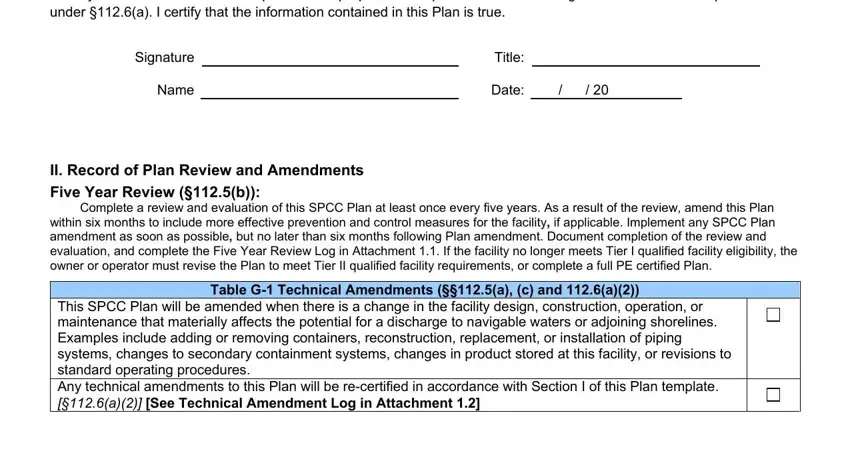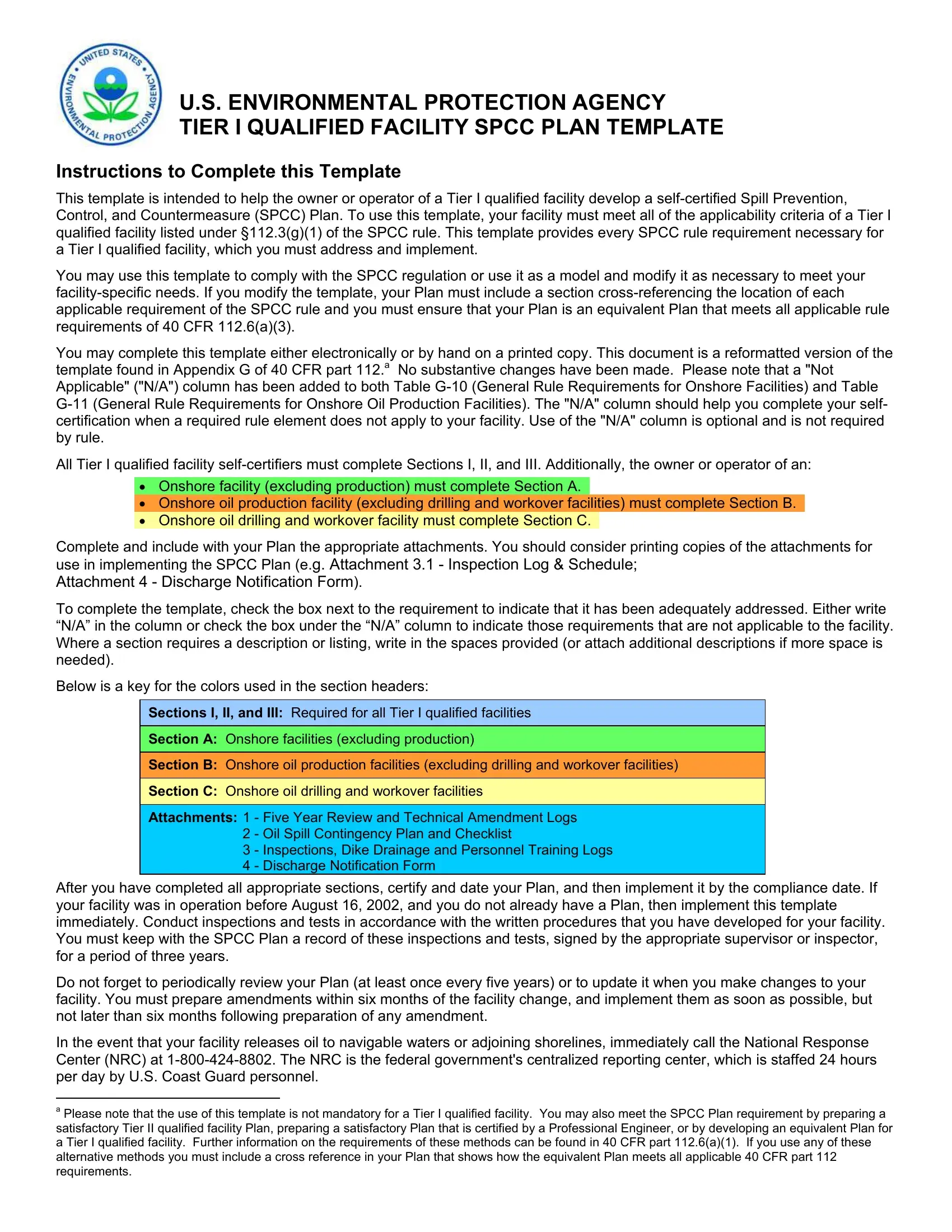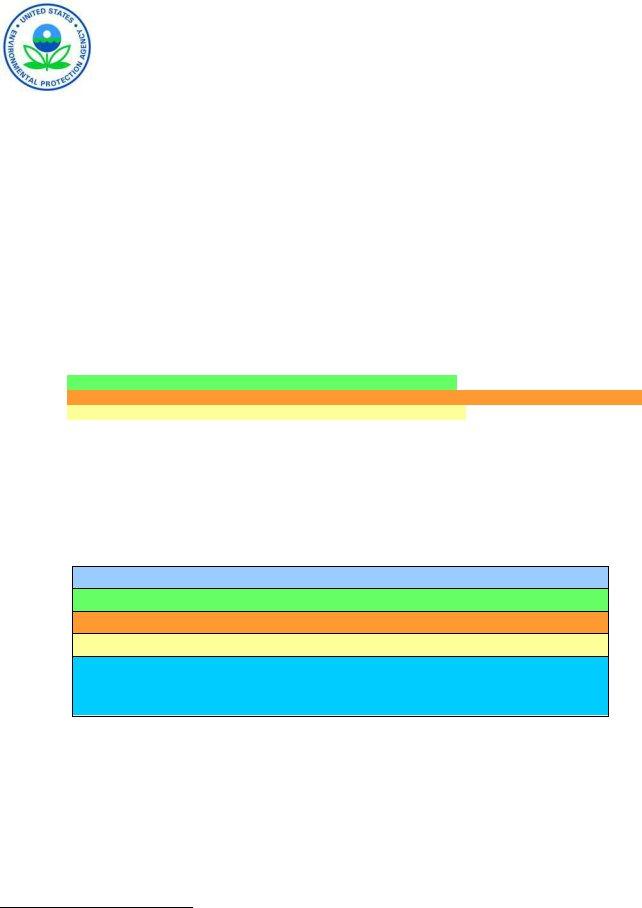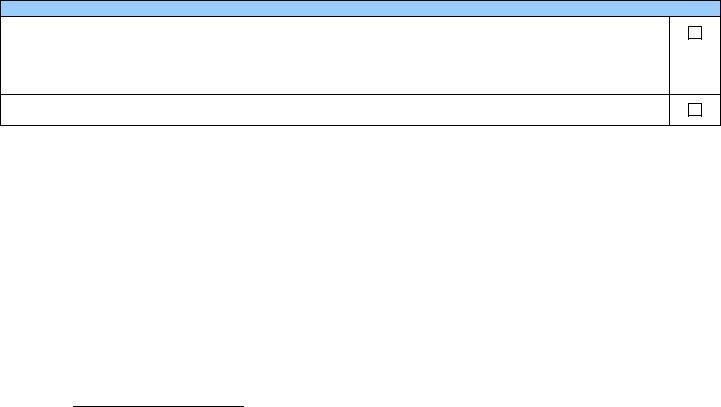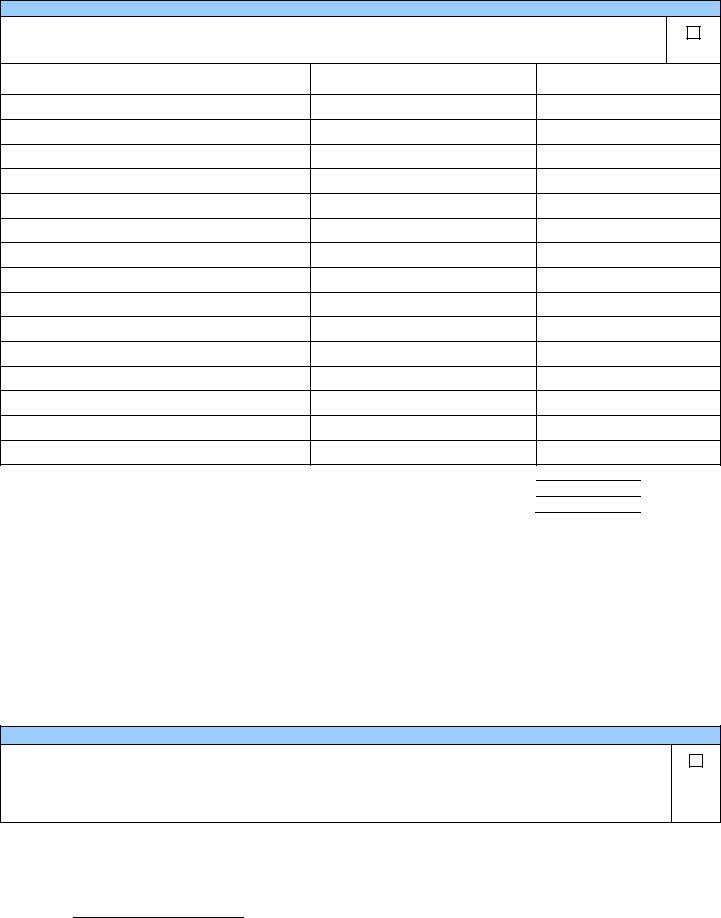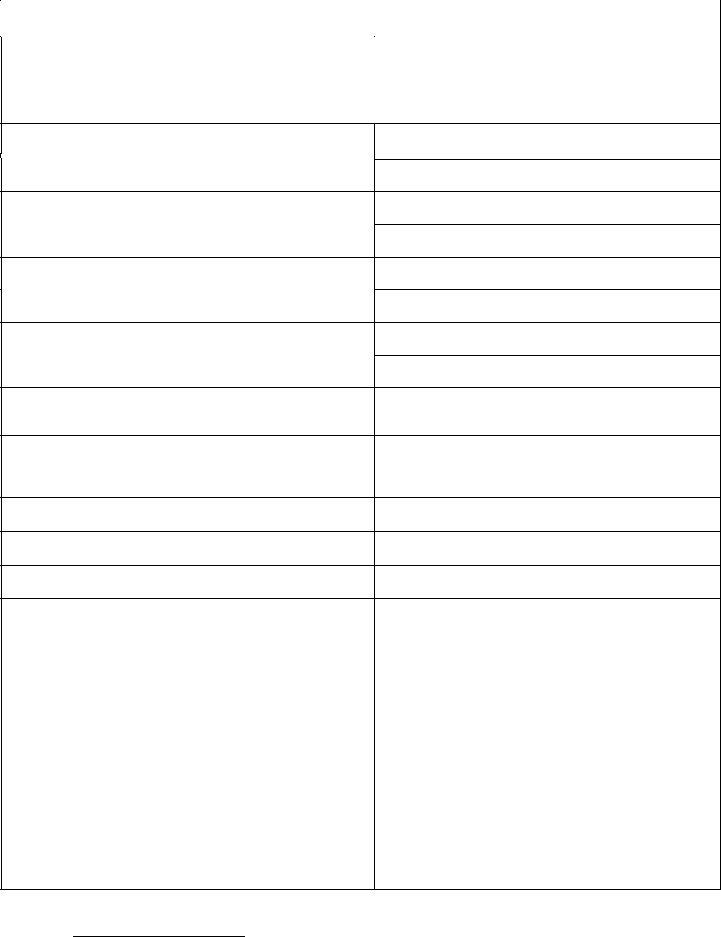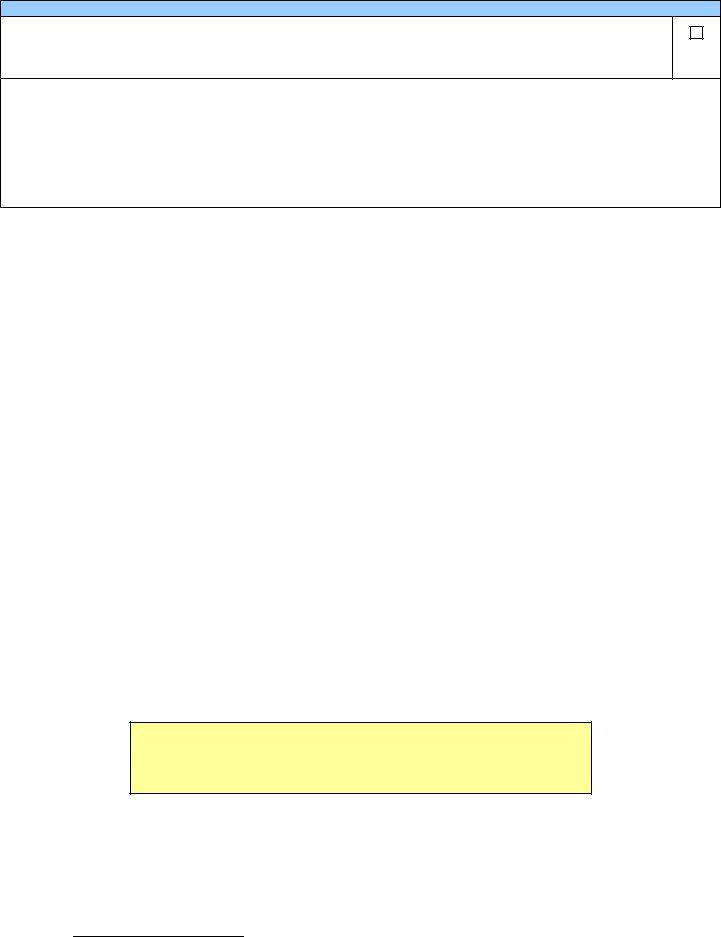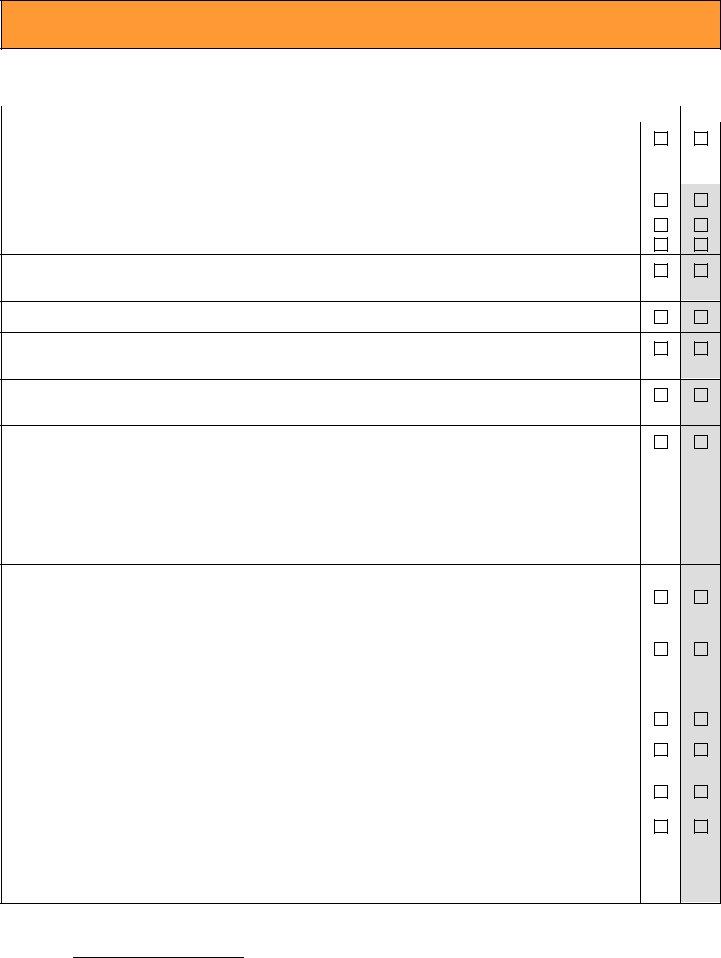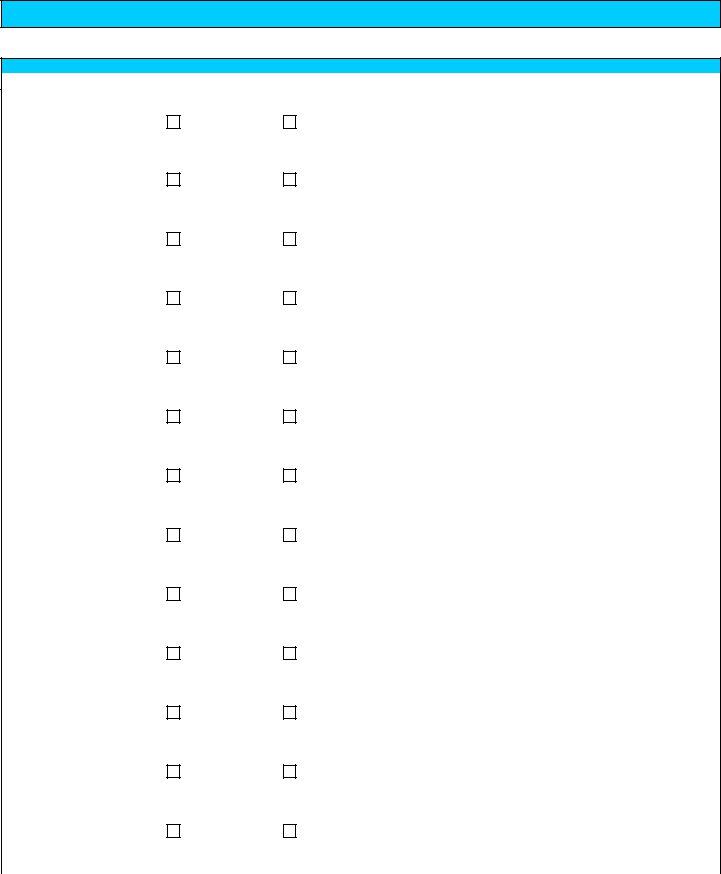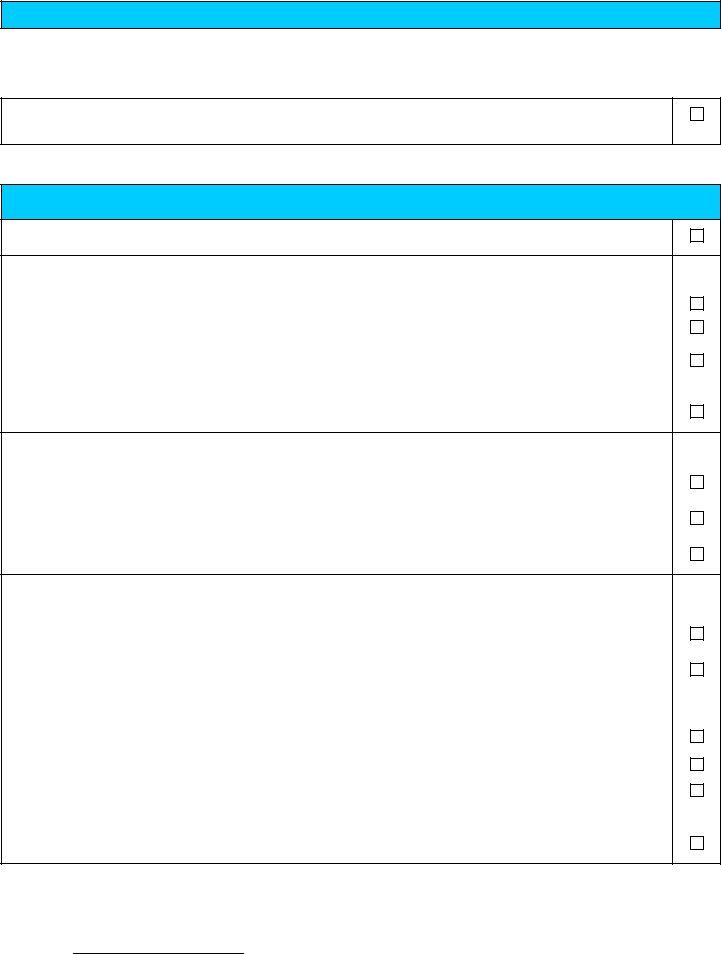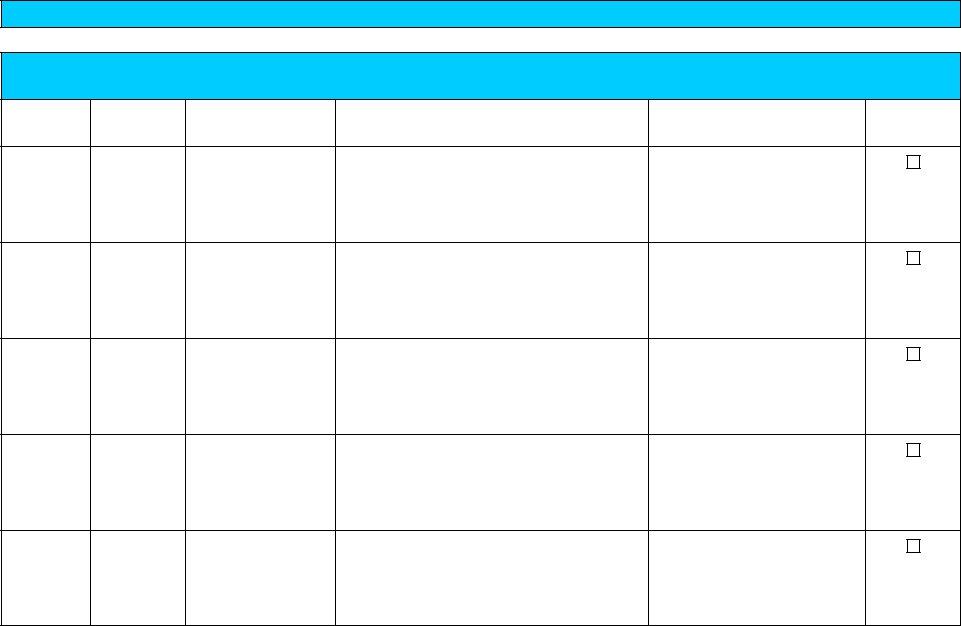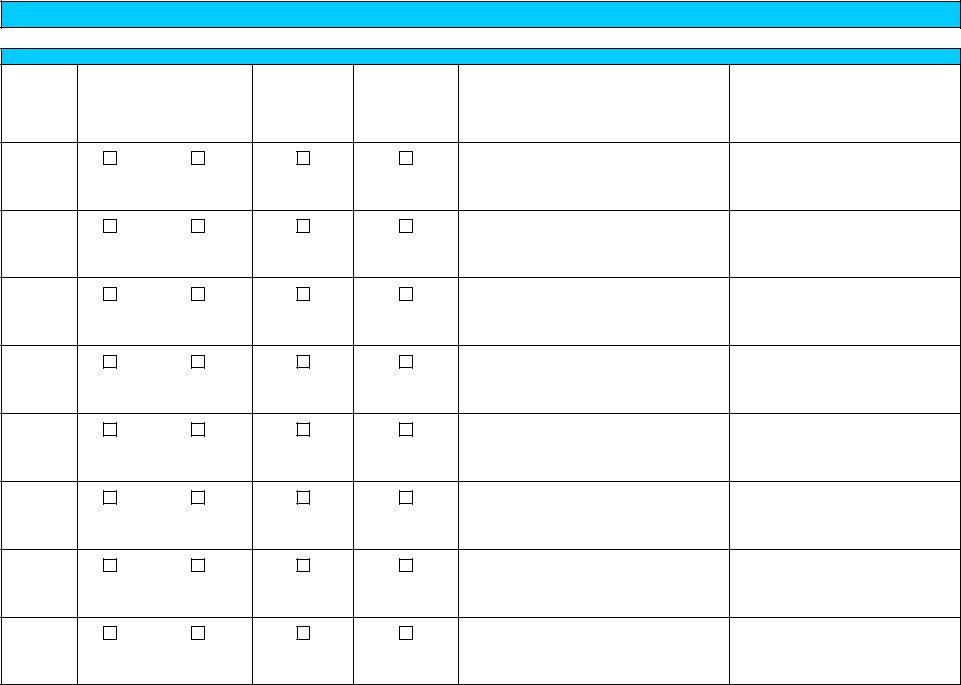U.S. ENVIRONMENTAL PROTECTION AGENCY
TIER I QUALIFIED FACILITY SPCC PLAN TEMPLATE
Instructions to Complete this Template
This template is intended to help the owner or operator of a Tier I qualified facility develop a self-certified Spill Prevention, Control, and Countermeasure (SPCC) Plan. To use this template, your facility must meet all of the applicability criteria of a Tier I qualified facility listed under §112.3(g)(1) of the SPCC rule. This template provides every SPCC rule requirement necessary for a Tier I qualified facility, which you must address and implement.
You may use this template to comply with the SPCC regulation or use it as a model and modify it as necessary to meet your facility-specific needs. If you modify the template, your Plan must include a section cross-referencing the location of each applicable requirement of the SPCC rule and you must ensure that your Plan is an equivalent Plan that meets all applicable rule requirements of 40 CFR 112.6(a)(3).
You may complete this template either electronically or by hand on a printed copy. This document is a reformatted version of the template found in Appendix G of 40 CFR part 112.a No substantive changes have been made. Please note that a "Not Applicable" ("N/A") column has been added to both Table G-10 (General Rule Requirements for Onshore Facilities) and Table G-11 (General Rule Requirements for Onshore Oil Production Facilities). The "N/A" column should help you complete your self- certification when a required rule element does not apply to your facility. Use of the "N/A" column is optional and is not required by rule.
All Tier I qualified facility self-certifiers must complete Sections I, II, and III. Additionally, the owner or operator of an:
•Onshore facility (excluding production) must complete Section A.
•Onshore oil production facility (excluding drilling and workover facilities) must complete Section B.
•Onshore oil drilling and workover facility must complete Section C.
Complete and include with your Plan the appropriate attachments. You should consider printing copies of the attachments for use in implementing the SPCC Plan (e.g. Attachment 3.1 - Inspection Log & Schedule;
Attachment 4 - Discharge Notification Form).
To complete the template, check the box next to the requirement to indicate that it has been adequately addressed. Either write “N/A” in the column or check the box under the “N/A” column to indicate those requirements that are not applicable to the facility. Where a section requires a description or listing, write in the spaces provided (or attach additional descriptions if more space is needed).
Below is a key for the colors used in the section headers:
Sections I, II, and III: Required for all Tier I qualified facilities
Section A: Onshore facilities (excluding production)
Section B: Onshore oil production facilities (excluding drilling and workover facilities)
Section C: Onshore oil drilling and workover facilities
Attachments: 1 - Five Year Review and Technical Amendment Logs
2 - Oil Spill Contingency Plan and Checklist
3 - Inspections, Dike Drainage and Personnel Training Logs
4 - Discharge Notification Form
After you have completed all appropriate sections, certify and date your Plan, and then implement it by the compliance date. If your facility was in operation before August 16, 2002, and you do not already have a Plan, then implement this template immediately. Conduct inspections and tests in accordance with the written procedures that you have developed for your facility. You must keep with the SPCC Plan a record of these inspections and tests, signed by the appropriate supervisor or inspector, for a period of three years.
Do not forget to periodically review your Plan (at least once every five years) or to update it when you make changes to your facility. You must prepare amendments within six months of the facility change, and implement them as soon as possible, but not later than six months following preparation of any amendment.
In the event that your facility releases oil to navigable waters or adjoining shorelines, immediately call the National Response Center (NRC) at 1-800-424-8802. The NRC is the federal government's centralized reporting center, which is staffed 24 hours per day by U.S. Coast Guard personnel.
a Please note that the use of this template is not mandatory for a Tier I qualified facility. You may also meet the SPCC Plan requirement by preparing a satisfactory Tier II qualified facility Plan, preparing a satisfactory Plan that is certified by a Professional Engineer, or by developing an equivalent Plan for a Tier I qualified facility. Further information on the requirements of these methods can be found in 40 CFR part 112.6(a)(1). If you use any of these alternative methods you must include a cross reference in your Plan that shows how the equivalent Plan meets all applicable 40 CFR part 112 requirements.
Ver. 1-L-doc-3-18-10
Tier I Qualified Facility SPCC Plan
This template constitutes the SPCC Plan for the facility, when completed and signed by the owner or operator of a facility that meets the applicability criteria in §112.3(g)(1). This template addresses the requirements of 40 CFR part 112. Maintain a complete copy of the Plan at the facility if the facility is normally attended at least four hours per day, or for a facility attended fewer than four hours per day, at the nearest field office. When making operational changes at a facility that are necessary to comply with the rule requirements, the owner/operator should follow state and local requirements (such as for permitting, design and construction) and obtain professional assistance, as appropriate.
Facility Description |
|
|
|
|
|
|
|
|
Facility Name |
|
|
|
|
|
|
|
|
Facility Address |
|
|
|
|
|
|
|
|
City |
|
State |
|
|
|
ZIP |
County |
|
Tel. Number |
( |
) |
- |
|
|
|
Owner or Operator Name |
|
|
|
|
|
|
|
|
Owner or Operator Address |
|
|
|
|
|
|
|
|
City |
|
State |
|
|
|
ZIP |
County |
|
|
Tel. Number |
( |
) |
- |
|
|
|
I. Self-Certification Statement (§112.6(a)(1))
The owner or operator of a facility certifies that each of the following is true in order to utilize this template to comply with the SPCC requirements:
I |
certify that the following is accurate: |
1.I am familiar with the applicable requirements of 40 CFR part 112;
2.I have visited and examined the facility;
3.This Plan was prepared in accordance with accepted and sound industry practices and standards;
4.Procedures for required inspections and testing have been established in accordance with industry inspection and testing standards or recommended practices;
5.I will fully implement the Plan;
6.This facility meets the following qualification criteria (under §112.3(g)(1)):
a.The aggregate aboveground oil storage capacity of the facility is 10,000 U.S. gallons or less; and
b.The facility has had no single discharge as described in §112.1(b) exceeding 1,000 U.S. gallons and no two discharges as described in §112.1(b) each exceeding 42 U.S. gallons within any twelve month period in the three years prior to the SPCC Plan self-certification date, or since becoming subject to 40 CFR part 112 if the facility has been in operation for less than three years (not including oil discharges as described in §112.1(b) that are the result of natural disasters, acts of war, or terrorism); and
c.There is no individual oil storage container at the facility with an aboveground capacity greater than 5,000 U.S. gallons.
7.This Plan does not deviate from any requirement of 40 CFR part 112 as allowed by §112.7(a)(2) (environmental equivalence) and §112.7(d) (impracticability of secondary containment) or include any measures pursuant to §112.9(c)(6) for produced water containers and any associated piping;
8.This Plan and individual(s) responsible for implementing this Plan have the full approval of management and I have committed the necessary resources to fully implement this Plan.
Facility Name: |
Page 1 |
Tier I Qualified Facility SPCC Plan |
|
Ver. 1-L-doc-3-18-10
I also understand my other obligations relating to the storage of oil at this facility, including, among others:
1.To report any oil discharge to navigable waters or adjoining shorelines to the appropriate authorities. Notification information is included in this Plan.
2.To review and amend this Plan whenever there is a material change at the facility that affects the potential for an oil discharge, and at least once every five years. Reviews and amendments are recorded in an attached log [See Five Year Review Log and Technical Amendment Log in Attachments 1.1 and 1.2.]
3.Optional use of a contingency plan. A contingency plan:
a.May be used in lieu of secondary containment for qualified oil-filled operational equipment, in accordance with the requirements under §112.7(k), and;
b.Must be prepared for flowlines and/or intra-facility gathering lines which do not have secondary containment at an oil production facility, and;
c.Must include an established and documented inspection or monitoring program; must follow the provisions of 40 CFR part 109; and must include a written commitment of manpower, equipment and materials to
expeditiously remove any quantity of oil discharged that may be harmful. If applicable, a copy of the contingency plan and any additional documentation will be attached to this Plan as Attachment 2.
I certify that I have satisfied the requirement to prepare and implement a Plan under §112.3 and all of the requirements under §112.6(a). I certify that the information contained in this Plan is true.
Signature |
|
Title: |
|
|
Name |
|
Date: |
/ / 20 |
|
II. Record of Plan Review and Amendments
Five Year Review (§112.5(b)):
Complete a review and evaluation of this SPCC Plan at least once every five years. As a result of the review, amend this Plan within six months to include more effective prevention and control measures for the facility, if applicable. Implement any SPCC Plan amendment as soon as possible, but no later than six months following Plan amendment. Document completion of the review and evaluation, and complete the Five Year Review Log in Attachment 1.1. If the facility no longer meets Tier I qualified facility eligibility, the owner or operator must revise the Plan to meet Tier II qualified facility requirements, or complete a full PE certified Plan.
Table G-1 Technical Amendments (§§112.5(a), (c) and 112.6(a)(2))
This SPCC Plan will be amended when there is a change in the facility design, construction, operation, or maintenance that materially affects the potential for a discharge to navigable waters or adjoining shorelines. Examples include adding or removing containers, reconstruction, replacement, or installation of piping systems, changes to secondary containment systems, changes in product stored at this facility, or revisions to standard operating procedures.
Any technical amendments to this Plan will be re-certified in accordance with Section I of this Plan template. [§112.6(a)(2)] [See Technical Amendment Log in Attachment 1.2]
Facility Name: |
Page 2 |
Tier I Qualified Facility SPCC Plan |
|
gallons gallons gallons
Ver. 1-L-doc-3-18-10
III. Plan Requirements
1. Oil Storage Containers (§112.7(a)(3)(i)):
Table G-2 Oil Storage Containers and Capacities
This table includes a complete list of all oil storage containers (aboveground containersa and completely buried tanksb) with capacity of 55 U.S. gallons or more, unless otherwise exempt from the rule. For mobile/portable containers, an estimated number of containers, types of oil, and anticipated capacities are provided.
|
Oil Storage Container (indicate whether |
Type of Oil |
Shell Capacity (gallons) |
|
aboveground (A) or completely buried (B)) |
|
|
|
Total Aboveground Storage Capacity c
Total Completely Buried Storage Capacity
Facility Total Oil Storage Capacity
aAboveground storage containers that must be included when calculating total facility oil storage capacity include: tanks and mobile or portable containers; oil-filled operational equipment (e.g. transformers); other oil-filled equipment, such as flow-through process equipment. Exempt containers that are not included in the capacity calculation include: any container with a storage capacity of less than 55 gallons of oil; containers used exclusively for wastewater treatment; permanently closed containers; motive power containers; hot-mix asphalt containers; heating oil containers used solely at a single-family residence; and pesticide application equipment or related mix containers.
bAlthough the criteria to determine eligibility for qualified facilities focuses on the aboveground oil storage containers at the facility, the completely buried tanks at a qualified facility are still subject to the rule requirements and must be addressed in the template; however, they are not counted toward the qualified facility applicability threshold.
cCounts toward qualified facility applicability threshold.
2. Secondary Containment and Oil Spill Control (§§112.6(a)(3)(i) and (ii), 112.7(c) and 112.9(c)(2)):
Table G-3 Secondary Containment and Oil Spill Control
Appropriate secondary containment and/or diversionary structures or equipmenta is provided for all oil handling containers, equipment, and transfer areas to prevent a discharge to navigable waters or adjoining shorelines. The entire secondary containment system, including walls and floor, is capable of containing oil and is constructed so that any discharge from a primary containment system, such as a tank or pipe, will not escape the containment system before cleanup occurs.
aUse one of the following methods of secondary containment or its equivalent: (1) Dikes, berms, or retaining walls sufficiently impervious to contain oil; (2) Curbing; (3) Culverting, gutters, or other drainage systems; (4) Weirs, booms, or other barriers; (5) Spill diversion ponds; (6) Retention ponds; or (7) Sorbent materials.
Facility Name: |
Page 3 |
Tier I Qualified Facility SPCC Plan |
|
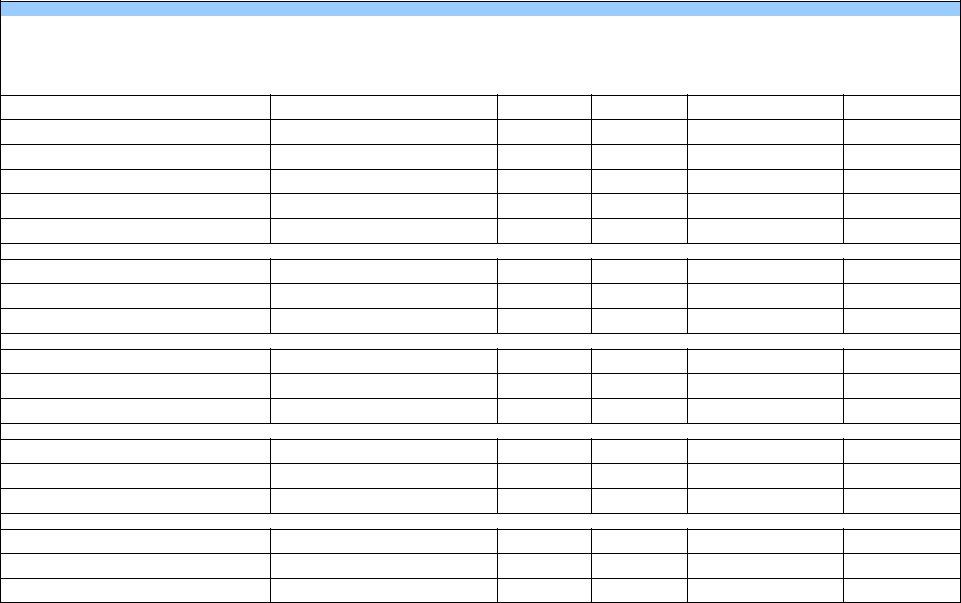
Ver. 1-L-doc-3-18-10
Table G-4 below identifies the tanks and containers at the facility with the potential for an oil discharge; the mode of failure; the flow direction and potential quantity of the discharge; and the secondary containment method and containment capacity that is provided.
Table G-4 Containers with Potential for an Oil Discharge
|
|
Potential |
Direction of |
|
Secondary |
Area |
Type of failure (discharge scenario) |
discharge |
flow for |
Secondary containment |
containment |
volume |
uncontained |
methoda |
capacity |
|
|
(gallons) |
discharge |
|
(gallons) |
Bulk Storage Containers and Mobile/Portable Containersb
Oil-filled Operational Equipment (e.g., hydraulic equipment, transformers)c
Piping, Valves, etc.
Product Transfer Areas (location where oil is loaded to or from a container, pipe or other piece of equipment.)
Other Oil-Handling Areas or Oil-Filled Equipment (e.g. flow-through process vessels at an oil production facility)
aUse one of the following methods of secondary containment or its equivalent: (1) Dikes, berms, or retaining walls sufficiently impervious to contain oil; (2) Curbing; (3) Culverting,
gutters, or other drainage systems; (4) Weirs, booms, or other barriers; (5) Spill diversion ponds; (6) Retention ponds; or (7) Sorbent materials.
b For storage tanks and bulk storage containers, the secondary containment capacity must be at least the capacity of the largest container plus additional capacity to contain rainfall
or other precipitation.
c For oil-filled operational equipment: Document in the table above if alternative measures to secondary containment (as described in §112.7(k)) are implemented at the facility.
Facility Name: |
|
Page 4 |
Tier I Qualified Facility SPCC Plan |
Ver. 1-L-doc-3-18-10
3.Inspections, Testing, Recordkeeping and Personnel Training (§§112.7(e) and (f), 112.8(c)(6) and (d)(4), 112.9(c)(3), 112.12(c)(6) and (d)(4)):
Table G-5 Inspections, Testing, Recordkeeping and Personnel Training
An inspection and/or testing program is implemented for all aboveground bulk storage containers and piping at this facility. [§§112.8(c)(6) and (d)(4), 112.9(c)(3), 112.12(c)(6) and (d)(4)]
The following is a description of the inspection and/or testing program (e.g. reference to industry standard utilized, scope, frequency, method of inspection or test, and person conducting the inspection) for all aboveground bulk storage containers and piping at this facility:
Inspections, tests, and records are conducted in accordance with written procedures developed for the facility. Records of inspections and tests kept under usual and customary business practices will suffice for purposes of this paragraph. [§112.7(e)]
A record of the inspections and tests are kept at the facility or with the SPCC Plan for a period of three years. [§112.7(e)] [See Inspection Log and Schedule in Attachment 3.1]
Inspections and tests are signed by the appropriate supervisor or inspector. [§112.7(e)]
Personnel, training, and discharge prevention procedures [§112.7(f)]
Oil-handling personnel are trained in the operation and maintenance of equipment to prevent discharges; discharge procedure protocols; applicable pollution control laws, rules, and regulations; general facility operations; and, the contents of the facility SPCC Plan. [§112.7(f)]
A person who reports to facility management is designated and accountable for discharge prevention. [§112.7(f)]
Name/Title:
Discharge prevention briefings are conducted for oil-handling personnel annually to assure adequate understanding of the SPCC Plan for that facility. Such briefings highlight and describe past reportable discharges or failures, malfunctioning components, and any recently developed precautionary measures. [§112.7(f)]
[See Oil-handling Personnel Training and Briefing Log in Attachment 3.4]
Facility Name: |
Page 5 |
Tier I Qualified Facility SPCC Plan |
|
Ver. 1-L-doc-3-18-10
4. Security (excluding oil production facilities) §112.7(g):
Table G-6 Implementation and Description of Security Measures
Security measures are implemented at this facility to prevent unauthorized access to oil handling, processing, and storage area.
The following is a description of how you secure and control access to the oil handling, processing and storage areas; secure master flow and drain valves; prevent unauthorized access to starter controls on oil pumps; secure out-of- service and loading/unloading connections of oil pipelines; address the appropriateness of security lighting to both prevent acts of vandalism and assist in the discovery of oil discharges:
5. Emergency Procedures and Notifications (§112.7(a)(3)(iv) and 112.7(a)(5)):
Table G-7 Description of Emergency Procedures and Notifications
The following is a description of the immediate actions to be taken by facility personnel in the event of a discharge to navigable waters or adjoining shorelines [§112.7(a)(3)(iv) and 112.7(a)(5)]:
Facility Name: |
Page 6 |
Tier I Qualified Facility SPCC Plan |
|
Ver. 1-L-doc-3-18-10
6. Contact List (§112.7(a)(3)(vi)):
|
Table G-8 Contact List |
Contact Organization / Person |
|
Telephone Number |
National Response Center (NRC) |
|
1-800-424-8802 |
Cleanup Contractor(s) |
|
|
|
|
|
Key Facility Personnel
Designated Person Accountable for Discharge Prevention:
State Oil Pollution Control Agencies
Other State, Federal, and Local Agencies
Local Fire Department
Local Police Department
Hospital
Office:
Emergency:
Office:
Emergency:
Office:
Emergency:
Office:
Emergency:
Other Contact References (e.g., downstream water intakes or neighboring facilities)
Facility Name: |
Page 7 |
Tier I Qualified Facility SPCC Plan |
|
Ver. 1-L-doc-3-18-10
7. NRC Notification Procedure (§112.7(a)(4) and (a)(5)):
Table G-9 NRC Notification Procedure
In the event of a discharge of oil to navigable waters or adjoining shorelines, the following information identified in Attachment 4 will be provided to the National Response Center immediately following identification of a discharge to navigable waters or adjoining shorelines [See Discharge Notification Form in Attachment 4]: [§112.7(a)(4)]
•The exact address or location and phone number of the facility;
•Date and time of the discharge;
•Type of material discharged;
•Estimate of the total quantity discharged;
•Estimate of the quantity discharged to navigable waters;
•Source of the discharge;
•Description of all affected media;
•Cause of the discharge;
•Any damages or injuries caused by the discharge;
•Actions being used to stop, remove, and mitigate the effects of the discharge;
•Whether an evacuation may be needed; and
•Names of individuals and/or organizations who have also been contacted.
8. SPCC Spill Reporting Requirements (Report within 60 days) (§112.4):
Submit information to the EPA Regional Administrator (RA) and the appropriate agency or agencies in charge of oil pollution control activities in the State in which the facility is located within 60 days from one of the following discharge events:
A single discharge of more than 1,000 U.S. gallons of oil to navigable waters or adjoining shorelines or
Two discharges to navigable waters or adjoining shorelines each more than 42 U.S. gallons of oil occurring within any twelve month period
You must submit the following information to the RA:
(1)Name of the facility;
(2)Your name;
(3)Location of the facility;
(4)Maximum storage or handling capacity of the facility and normal daily throughput;
(5)Corrective action and countermeasures you have taken, including a description of equipment repairs and replacements;
(6)An adequate description of the facility, including maps, flow diagrams, and topographical maps, as necessary;
(7)The cause of the reportable discharge, including a failure analysis of the system or subsystem in which the failure occurred; and
(8)Additional preventive measures you have taken or contemplated to minimize the possibility of recurrence
(9)Such other information as the Regional Administrator may reasonably require pertinent to the Plan or discharge
* * * * *
NOTE: Complete one of the following sections (A, B or C)
as appropriate for the facility type.
Facility Name: |
Page 8 |
Tier I Qualified Facility SPCC Plan |
|
Ver. 1-L-doc-3-18-10
A. Onshore Facilities (excluding production) (§§112.8(b) through (d), 112.12(b) through (d)):
The owner or operator must meet the general rule requirements as well as requirements under this section. Note that not all provisions may be applicable to all owners/operators. For example, a facility may not maintain completely buried metallic storage tanks installed after January 10, 1974, and thus would not have to abide by requirements in §§112.8(c)(4) and 112.12(c)(4), listed below. In cases where a provision is not applicable, write “N/A”.
Table G-10 General Rule Requirements for Onshore Facilities |
N/A |
Drainage from diked storage areas is restrained by valves to prevent a discharge into the drainage |
|
system or facility effluent treatment system, except where facility systems are designed to control such |
|
discharge. Diked areas may be emptied by pumps or ejectors that must be manually activated after |
|
inspecting the condition of the accumulation to ensure no oil will be discharged. [§§112.8(b)(1) and |
|
112.12(b)(1)] |
|
Valves of manual, open-and-closed design are used for the drainage of diked areas. [§§112.8(b)(2) and |
|
112.12(b)(2)] |
|
The containers at the facility are compatible with materials stored and conditions of storage such as |
|
pressure and temperature. [§§112.8(c)(1) and 112.12(c)(1)] |
|
Secondary containment for the bulk storage containers (including mobile/portable oil storage containers) |
|
holds the capacity of the largest container plus additional capacity to contain precipitation. Mobile or |
|
portable oil storage containers are positioned to prevent a discharge as described in §112.1(b). |
|
[§112.6(a)(3)(ii)] |
|
If uncontaminated rainwater from diked areas drains into a storm drain or open watercourse the following |
|
procedures will be implemented at the facility: [§§112.8(c)(3) and 112.12(c)(3)] |
|
• Bypass valve is normally sealed closed |
|
|
|
•Retained rainwater is inspected to ensure that its presence will not cause a discharge to navigable waters or adjoining shorelines
• Bypass valve is opened and resealed under responsible supervision
• Adequate records of drainage are kept [See Dike Drainage Log in Attachment 3.3]
For completely buried metallic tanks installed on or after January 10, 1974 at this facility [§§112.8(c)(4) and 112.12(c)(4)]:
• Tanks have corrosion protection with coatings or cathodic protection compatible with local soil conditions.
• Regular leak testing is conducted.
For partially buried or bunkered metallic tanks [§112.8(c)(5) and §112.12(c)(5)]:
•Tanks have corrosion protection with coatings or cathodic protection compatible with local soil conditions.
Each aboveground bulk container is tested or inspected for integrity on a regular schedule and whenever material repairs are made. Scope and frequency of the inspections and inspector qualifications are in accordance with industry standards. Container supports and foundations are regularly inspected.
[See Inspection Log and Schedule and Bulk Storage Container Inspection Schedule in Attachments 3.1 and 3.2] [§112.8(c)(6) and §112.12(c)(6)(i)]
Outsides of bulk storage containers are frequently inspected for signs of deterioration, discharges, or accumulation of oil inside diked areas. [See Inspection Log and Schedule in Attachment 3.1] [§§112.8(c)(6) and 112.12(c)(6)]
For bulk storage containers that are subject to 21 CFR part 110 which are shop-fabricated, constructed of austenitic stainless steel, elevated and have no external insulation, formal visual inspection is conducted on a regular schedule. Appropriate qualifications for personnel performing tests and inspections are documented. [See Inspection Log and Schedule and Bulk Storage Container Inspection Schedule in Attachments 3.1 and 3.2] [§112.12(c)(6)(ii)]
Facility Name: |
Page 9 |
Tier I Qualified Facility SPCC Plan |
|
|
Ver. 1-L-doc-3-18-10 |
|
|
|
Table G-10 General Rule Requirements for Onshore Facilities |
|
N/A |
Each container is provided with a system or documented procedure to prevent overfills for the container. |
|
|
Describe: |
|
|
|
|
|
Liquid level sensing devices are regularly tested to ensure proper operation [See Inspection Log and Schedule in Attachment 3.1]. [§112.6(a)(3)(iii)]
Visible discharges which result in a loss of oil from the container, including but not limited to seams, gaskets, piping, pumps, valves, rivets, and bolts are promptly corrected and oil in diked areas is promptly removed. [§§112.8(c)(10) and 112.12(c)(10)]
Aboveground valves, piping, and appurtenances such as flange joints, expansion joints, valve glands and bodies, catch pans, pipeline supports, locking of valves, and metal surfaces are inspected regularly. [See Inspection Log and Schedule in Attachment 3.1] [§§112.8(d)(4) and 112.12(d)(4)]
Integrity and leak testing are conducted on buried piping at the time of installation, modification, construction, relocation, or replacement. [See Inspection Log and Schedule in Attachment 3.1] [§§112.8(d)(4) and 112.12(d)(4)]
Facility Name: |
Page 10 |
Tier I Qualified Facility SPCC Plan |
|
Ver. 1-L-doc-3-18-10
B. Onshore Oil Production Facilities (excluding drilling and workover facilities) (§112.9(b), (c), and (d)):
The owner or operator must meet the general rule requirements as well as the requirements under this section. Note that not all provisions may be applicable to all owners/operators. In cases where a provision is not applicable, write “N/A”.
Table G-11 General Rule Requirements for Onshore Oil Production Facilities |
N/A |
At tank batteries, separation and treating areas, drainage is closed and sealed except when draining |
|
uncontaminated rainwater. Accumulated oil on the rainwater is returned to storage or disposed of in |
|
accordance with legally approved methods. [§112.9(b)(1)] |
|
Prior to drainage, diked areas are inspected and [§112.9(b)(1)]: |
|
•Retained rainwater is inspected to ensure that its presence will not cause a discharge to navigable waters
• Bypass valve is opened and resealed under responsible supervision
• Adequate records of drainage are kept [See Dike Drainage Log in Attachment 3.3]
Field drainage systems and oil traps, sumps, or skimmers are inspected at regularly scheduled intervals for oil, and accumulations of oil are promptly removed [See Inspection Log and Schedule in Attachment 3.1] [§112.9(b)(2)]
The containers used at this facility are compatible with materials stored and conditions of storage. [§112.9(c)(1)]
All tank battery, separation, and treating facility installations (except for flow-through process vessels) are constructed with a capacity to hold the largest single container plus additional capacity to contain rainfall. Drainage from undiked areas is safely confined in a catchment basin or holding pond. [§112.9(c)(2)]
Except for flow-through process vessels, containers that are on or above the surface of the ground, including foundations and supports, are visually inspected for deterioration and maintenance needs on a regular schedule. [See Inspection Log and Schedule in Attachment 3.1] [§112.9(c)(3)]
New and old tank batteries at this facility are engineered/updated in accordance with good engineering practices to prevent discharges including at least one of the following:
i.adequate container capacity to prevent overfill if regular pumping/gauging is delayed;
ii.overflow equalizing lines between containers so that a full container can overflow to an adjacent container;
iii.vacuum protection to prevent container collapse; or
iv.high level sensors to generate and transmit an alarm to the computer where the facility is subject to a computer production control system. [§112.9(c)(4)]
Flow-through process vessels and associated components are:
• Are constructed with a capacity to hold the largest single container plus additional capacity to contain rainfall. Drainage from undiked areas is safely confined in a catchment basin or holding pond; [§112.9(c)(2)] and
• That are on or above the surface of the ground, including foundations and supports, are visually inspected for deterioration and maintenance needs on a regular schedule. [See Inspection Log and Schedule in Attachment 3.1] [§112.9(c)(3)]
Or
•Visually inspected and/or tested periodically and on a regular schedule for leaks, corrosion, or other conditions that could lead to a discharge to navigable waters; and
•Corrective action or repairs are applied to flow-through process vessels and any associated components as indicated by regularly scheduled visual inspections, tests, or evidence of an oil
discharge; and
• Any accumulations of oil discharges associated with flow-through process vessels are promptly removed; and
•Flow-through process vessels are provided with a secondary means of containment for the entire capacity of the largest single container and sufficient freeboard to contain precipitation within six months of a discharge from flow-through process vessels of more than 1,000 U.S. gallons of oil in a single discharge as described in §112.1(b), or a discharge more than 42 U.S. gallons of oil in each of two discharges as described in §112.1(b) within any twelve month period. [§112.9(c)(5)] (Leave blank until such time that this provision is applicable.)
Facility Name: |
Page 11 |
Tier I Qualified Facility SPCC Plan |
|
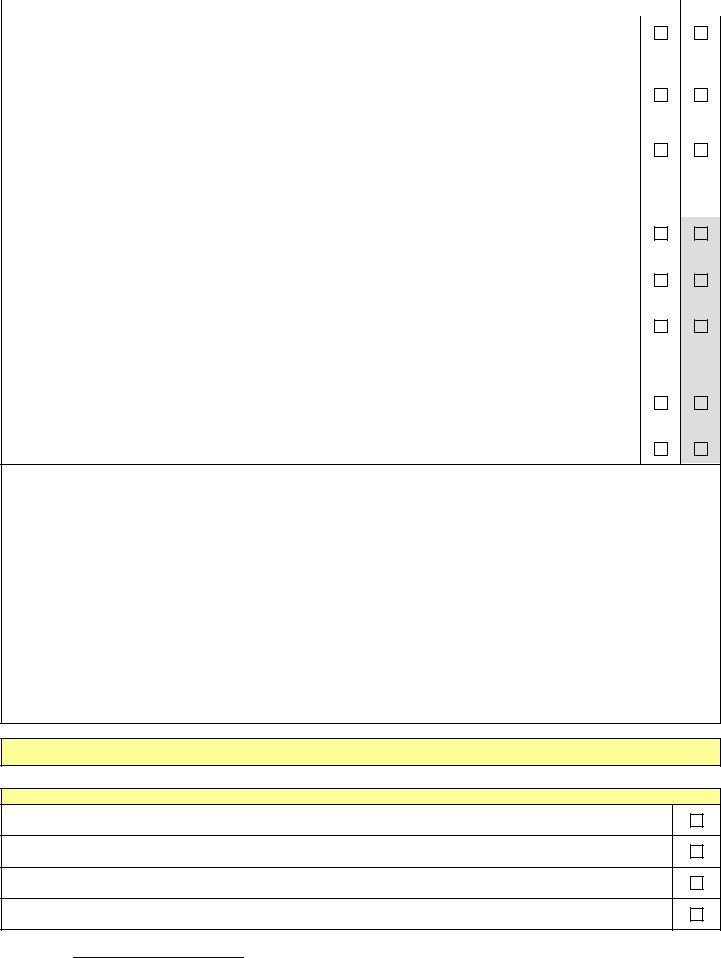
|
Ver. 1-L-doc-3-18-10 |
|
|
|
|
|
Table G-11 General Rule Requirements for Onshore Oil Production Facilities |
|
|
N/A |
All aboveground valves and piping associated with transfer operations are inspected periodically and |
|
|
|
|
upon a regular schedule. The general condition of flange joints, valve glands and bodies, drip pans, pipe |
|
|
|
|
supports, pumping well polish rod stuffing boxes, bleeder and gauge valves, and other such items are |
|
|
|
|
included in the inspection. [See Inspection Log and Schedule in Attachment 3.1] [§112.9(d)(1)] |
|
|
|
|
An oil spill contingency plan and written commitment of resources are provided for flowlines and intra- |
|
|
|
|
facility gathering lines [See Oil Spill Contingency Plan and Checklist in Attachment 2 and Inspection |
|
|
|
Log and Schedule in Attachment 3.1] [§112.9(d)(3)] |
|
|
|
|
or |
|
|
|
|
Appropriate secondary containment and/or diversionary structures or equipment is provided for flowlines |
|
|
|
|
and intra-facility gathering lines to prevent a discharge to navigable waters or adjoining shorelines. The |
|
|
|
|
entire secondary containment system, including walls and floor, is capable of containing oil and is |
|
|
|
|
constructed so that any discharge from the pipe, will not escape the containment system before cleanup |
|
|
|
|
occurs. |
|
|
|
|
A flowline/intra-facility gathering line maintenance program to prevent discharges from each flowline has |
|
|
|
|
been established at this facility. The maintenance program addresses each of the following: |
|
|
|
|
|
|
|
|
•Flowlines and intra-facility gathering lines and associated valves and equipment are compatible with the type of production fluids, their potential corrosivity, volume, and pressure, and other conditions expected in the operational environment;
•Flowlines, intra-facility gathering lines and associated appurtenances are visually inspected and/or tested on a periodic and regular schedule for leaks, oil discharges, corrosion, or other conditions that could lead to a discharge as described in §112.1(b). The frequency and type of testing allows for the implementation of a contingency plan as described under part 109 of this chapter.
•Corrective action and repairs to any flowlines and intra-facility gathering lines and associated appurtenances as indicated by regularly scheduled visual inspections, tests, or evidence of a discharge.
•Accumulations of oil discharges associated with flowlines, intra-facility gathering lines, and associated appurtenances are promptly removed. [§112.9(d)(4)]
The following is a description of the flowline/intra-facility gathering line maintenance program implemented at this facility:
C. Onshore Oil Drilling and Workover Facilities (§112.10(b), (c) and (d)):
The owner or operator must meet the general rule requirements as well as the requirements under this section.
Table G-12 General Rule Requirements for Onshore Oil Drilling and Workover Facilities
Mobile drilling or worker equipment is positioned or located to prevent discharge as described in §112.1(b). [§112.10(b)]
Catchment basins or diversion structures are provided to intercept and contain discharges of fuel, crude oil, or oily drilling fluids. [§112.10(c)]
A blowout prevention (BOP) assembly and well control system was installed before drilling below any casing string or during workover operations. [§112.10(d)]
The BOP assembly and well control system is capable of controlling any well-head pressure that may be encountered while the BOP assembly and well control system are on the well. [§112.10(d)]
Facility Name: |
Page 12 |
Tier I Qualified Facility SPCC Plan |
|
Ver. 1-L-doc-3-18-10
ATTACHMENT 1 – Five Year Review and Technical Amendment Logs
ATTACHMENT 1.1 – Five Year Review Log
I have completed a review and evaluation of the SPCC Plan for this facility, and will/will not amend this Plan as a result.
Table G-13 Review and Evaluation of SPCC Plan for Facility
Review Date |
Plan Amendment |
Name and signature of person authorized to review this |
|
Will Amend |
Will Not Amend |
Plan |
|
|
|
|
|
|
|
|
|
|
|
|
|
|
|
|
|
|
|
|
|
|
|
|
|
|
|
|
|
|
|
|
|
|
|
|
|
|
|
|
|
|
|
|
|
|
|
|
|
|
|
|
[Insert Facility Name Here] |
Page 13 |
Tier I Qualified Facility SPCC Plan |
Ver. 1-L-doc-3-18-10
ATTACHMENT 1.2 – Technical Amendment Log
Any technical amendments to this Plan will be re-certified in accordance with Section I of this Plan template.
Table G-15 Description and Certification of Technical Amendments
Review |
Description of Technical Amendment |
Name and signature of person certifying this |
Date |
|
technical amendment |
|
|
|
|
|
|
|
|
|
|
|
|
|
|
|
|
|
|
|
|
|
|
|
|
|
|
|
|
|
|
|
|
|
|
|
|
|
|
|
Facility Name: |
Page 14 |
Tier I Qualified Facility SPCC Plan |
|
Ver. 1-L-doc-3-18-10
ATTACHMENT 2 – Oil Spill Contingency Plan and Checklist
An oil spill contingency plan and written commitment of resources is required for:
•Flowlines and intra-facility gathering lines at oil production facilities and
•Qualified oil-filled operational equipment which has no secondary containment.
An oil spill contingency plan meeting the provisions of 40 CFR part 109, as described below, and a written commitment of manpower, equipment and materials required to expeditiously control and remove any quantity of oil discharged that may be harmful is attached to this Plan.
Complete the checklist below to verify that the necessary operations outlined in 40 CFR part 109 - Criteria for State, Local and Regional Oil Removal Contingency Plans - have been included.
Table G-15 Checklist of Development and Implementation Criteria for State, Local and Regional Oil Removal
Contingency Plans (§109.5)a
(a)Definition of the authorities, responsibilities and duties of all persons, organizations or agencies which are to be involved in planning or directing oil removal operations.
(b)Establishment of notification procedures for the purpose of early detection and timely notification of an oil discharge including:
(1) The identification of critical water use areas to facilitate the reporting of and response to oil discharges.
(2)A current list of names, telephone numbers and addresses of the responsible persons (with alternates) and organizations to be notified when an oil discharge is discovered.
(3)Provisions for access to a reliable communications system for timely notification of an oil discharge, and the capability of interconnection with the communications systems established under related oil removal contingency plans, particularly State and National plans (e.g., NCP).
(4)An established, prearranged procedure for requesting assistance during a major disaster or when the situation exceeds the response capability of the State, local or regional authority.
(c)Provisions to assure that full resource capability is known and can be committed during an oil discharge situation including:
(1)The identification and inventory of applicable equipment, materials and supplies which are available locally and regionally.
(2)An estimate of the equipment, materials and supplies which would be required to remove the maximum oil discharge to be anticipated.
(3)Development of agreements and arrangements in advance of an oil discharge for the acquisition of equipment, materials and supplies to be used in responding to such a discharge.
(d)Provisions for well defined and specific actions to be taken after discovery and notification of an oil discharge including:
(1)Specification of an oil discharge response operating team consisting of trained, prepared and available operating personnel.
(2)Predesignation of a properly qualified oil discharge response coordinator who is charged with the responsibility and delegated commensurate authority for directing and coordinating response operations and who knows how to request assistance from Federal authorities operating under existing national and regional contingency plans.
(3)A preplanned location for an oil discharge response operations center and a reliable communications system for directing the coordinated overall response operations.
(4) Provisions for varying degrees of response effort depending on the severity of the oil discharge.
(5) Specification of the order of priority in which the various water uses are to be protected where more than one water use may be adversely affected as a result of an oil discharge and where response operations may not be adequate to protect all uses.
(6)Specific and well defined procedures to facilitate recovery of damages and enforcement measures as provided for by State and local statutes and ordinances.
aThe contingency plan must be consistent with all applicable state and local plans, Area Contingency Plans, and the National Contingency Plan (NCP)
Facility Name: |
Page 15 |
Tier I Qualified Facility SPCC Plan |
|
Ver. 1-L-doc-3-18-10
ATTACHMENT 3 – Inspections, Dike Drainage and Personnel Training Logs
ATTACHMENT 3.1 – Inspection Log and Schedule
Table G-16 Inspection Log and Schedule
This log is intended to document compliance with §§112.6(a)(3)(iii), 112.8(c)(6), 112.8(d)(4), 112.9(b)(2), 112.9(c)(3), 112.9(d)(1), 112.9(d)(4), 112.12.(c)(6), and
112.12(d)(4), as applicable.
Container /
Piping /
Equipment
Describe Scope (or cite Industry Standard)
Name/ Signature of Inspector
Records
maintained separately a
aIndicate in the table above if records of facility inspections are maintained separately at this facility.
Facility Name: |
|
Page 16 |
Tier I Qualified Facility SPCC Plan |
Ver. 1-L-doc-3-18-10
ATTACHMENT 3.2 – Bulk Storage Container Inspection Schedule – onshore facilities (excluding production):
To comply with integrity inspection requirement for bulk storage containers, inspect/test each shop-built aboveground bulk storage container on a regular schedule in accordance with a recognized container inspection standard based on the minimum requirements in the following table.
Table G-17 Bulk Storage Container Inspection Schedule
|
Container Size and Design Specification |
Inspection requirement |
|
|
|
|
Portable containers (including drums, totes, and intermodal |
Visually inspect monthly for signs of deterioration, |
|
bulk containers (IBC)) |
|
discharges or accumulation of oil inside diked areas |
|
|
|
|
|
55 to 1,100 gallons with sized secondary containment |
Visually inspect monthly for signs of deterioration, |
|
discharges or accumulation of oil inside diked areas |
|
1,101 to 5,000 gallons with sized secondary containment and a |
|
plus any annual inspection elements per industry |
|
means of leak detection |
a |
|
|
inspection standards |
|
|
|
|
1,101 to 5,000 gallons with sized secondary containment and |
Visually inspect monthly for signs of deterioration, |
|
no method of leak detectiona |
discharges or accumulation of oil inside diked areas, |
|
|
|
plus any annual inspection elements and other |
|
|
|
specific integrity tests that may be required per |
|
|
|
industry inspection standards |
aExamples of leak detection include, but are not limited to, double-walled tanks and elevated containers where a leak can be visually identified.
Facility Name: |
Page 17 |
Tier I Qualified Facility SPCC Plan |
|
Ver. 1-L-doc-3-18-10
ATTACHMENT 3.3 – Dike Drainage Log
Table G-18 Dike Drainage Log
Bypass |
Rainwater |
valve |
inspected to be |
sealed |
sure no oil (or |
closed |
sheen) is visible |
|
|
Open bypass
valve and
reseal it
following drainage
Drainage
activity
supervised
Facility Name: |
|
Page 18 |
Tier I Qualified Facility SPCC Plan |
Ver. 1-L-doc-3-18-10
ATTACHMENT 3.4 – Oil-handling Personnel Training and Briefing Log
Table G-19 Oil-Handling Personnel Training and Briefing Log
Date |
Description / Scope |
Attendees |
|
|
|
|
|
|
|
|
|
|
|
|
|
|
|
Facility Name: |
Page 19 |
Tier I Qualified Facility SPCC Plan |
|
Ver. 1-L-doc-3-18-10
ATTACHMENT 4 – Discharge Notification Form
In the event of a discharge of oil to navigable waters or adjoining shorelines, the following information will be provided to the National Response Center [also see the notification information provided in Section 7 of the Plan]:
|
|
Table G-20 Information provided to the National Response Center in the Event of a Discharge |
|
|
|
Discharge/Discovery Date |
|
|
|
Time |
|
|
|
|
|
|
|
|
|
|
|
|
|
|
|
|
Facility Name |
|
|
|
|
|
|
|
|
|
|
|
|
|
|
|
|
|
|
|
|
Facility Location (Address/Lat- |
|
|
|
|
|
|
|
|
|
Long/Section Township Range) |
|
|
|
|
|
|
|
|
|
|
|
|
|
|
|
|
|
|
|
|
Name of reporting individual |
|
|
|
Telephone # |
|
|
|
|
|
|
|
|
|
|
|
|
|
|
Type of material discharged |
|
|
|
Estimated total quantity |
Gallons/Barrels |
|
|
|
|
|
|
|
discharged |
|
|
|
|
|
|
|
|
|
|
|
|
|
|
|
|
Source of the discharge |
|
|
|
Media affected |
Soil |
|
|
|
|
|
|
|
|
|
|
|
|
|
|
|
|
|
|
|
Water (specify) |
|
|
|
|
|
|
|
|
|
|
|
|
|
|
|
|
|
Other (specify) |
|
|
|
|
|
|
|
|
|
|
|
|
|
Actions taken |
|
|
|
|
|
|
|
|
|
|
|
|
|
|
|
|
|
|
Damage or injuries |
|
No |
Yes (specify) |
Evacuation needed? |
No |
Yes (specify) |
|
|
|
|
|
|
|
|
|
|
|
|
Organizations and individuals |
|
National Response Center 800-424-8802 Time |
|
|
|
|
|
contacted |
|
|
|
|
|
|
|
|
|
|
Cleanup contractor (Specify) Time |
|
|
|
|
|
|
|
|
|
|
|
|
|
|
|
|
|
|
|
|
|
|
|
|
|
Facility personnel (Specify) Time |
|
|
|
|
|
|
|
|
|
|
|
|
|
|
|
|
|
State Agency (Specify) Time |
|
|
|
|
|
|
|
|
|
|
|
|
|
|
|
|
|
Other (Specify) Time |
|
|
|
|
|
|
|
|
|
|
|
|
Facility Name: |
|
|
|
Page 20 |
Tier I Qualified Facility SPCC Plan |


